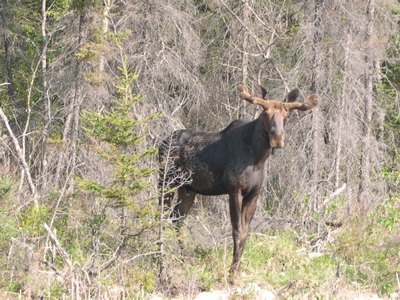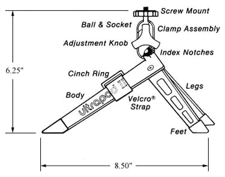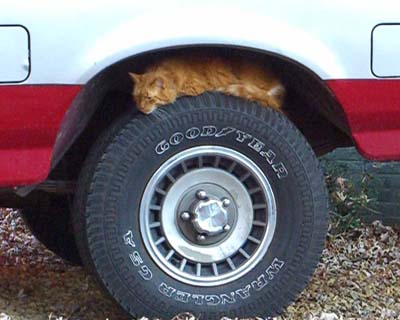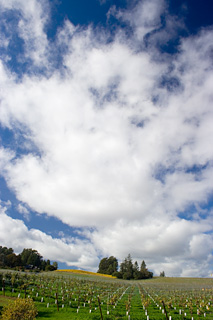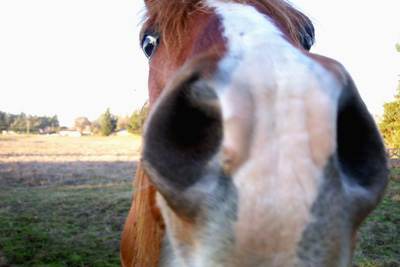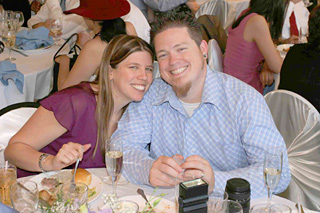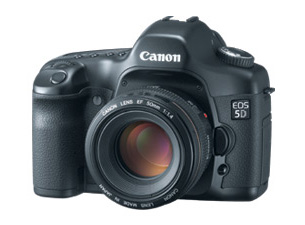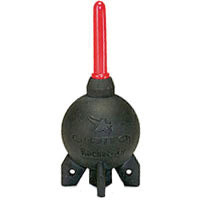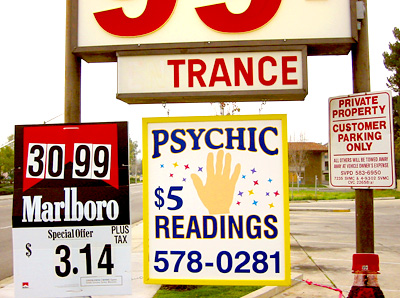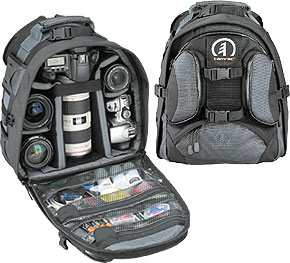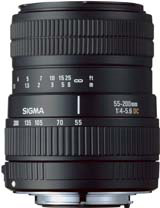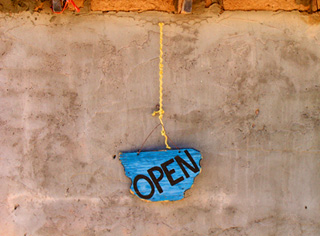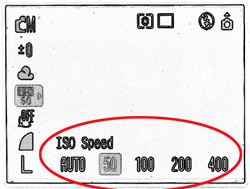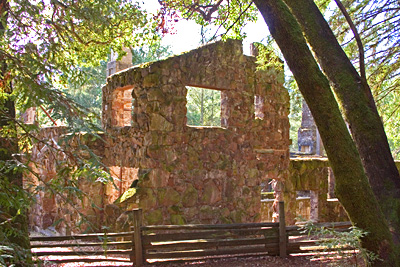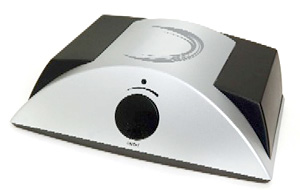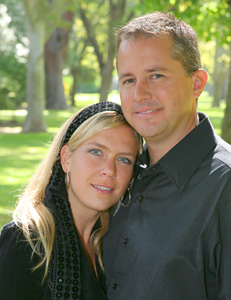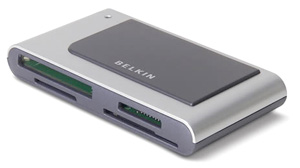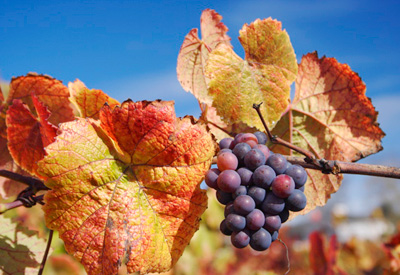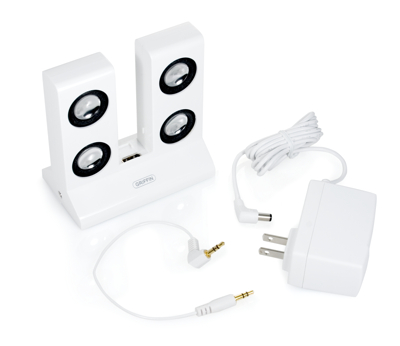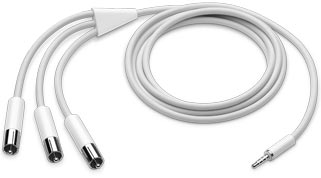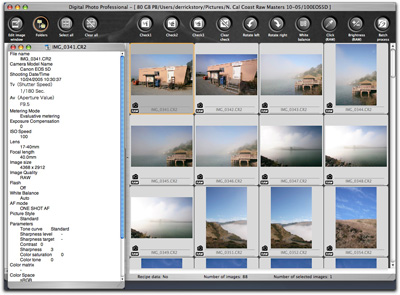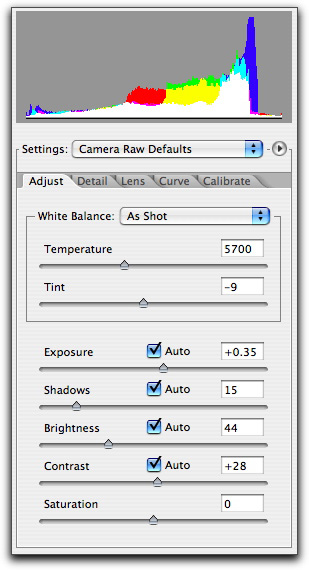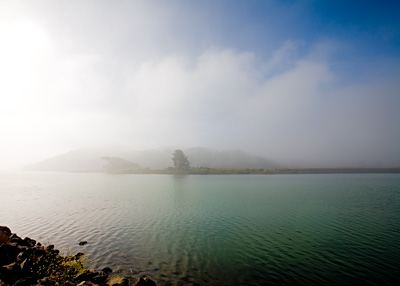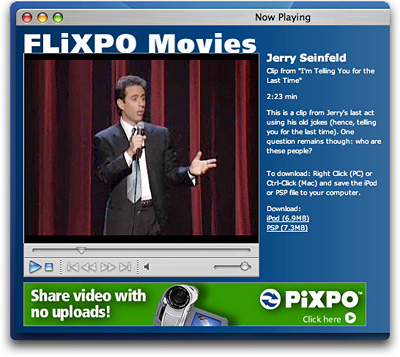
You can download Jerry Seinfeld and a host of other great personalities on FLiXPO...
One of the questions readers have been asking here at The Digital Story is if we're going to offer more video content. Indeed we will, but you can download lots of terrific stuff right now at FLiXPO, a brand new service offering comedy, indie video, movie trailers, and funny ads.
Simply browse FLiXPO's various "Channels," preview the clip you're interested in, then choose either the "iPod" or "PSP" link. I downloaded a Jerry Seinfeld standup routine. After a brief wait, the video appeared in its own browser window. I selected "Save as Source" from the dropdown menu in the lower right corner of the QuickTime window (look for the downward pointing triangle), and saved the clip to my Desktop.
I then opened iTunes and dragged the clip to my video playlist. I noticed that the ID3 tags were a little sparse, so I highlighted the title by clicking once on it, then went to File > Get Info. There I clicked on the Info tab and proceeded to clean up the title text, add Jerry as the artist, and choose "Video" for my Genre.
Everything looked ready to go, so I connected my iPod video and uploaded the FLiXPO video. The upload went smoothly and within a few minutes I was watching Jerry do his "Milk" routine right there on the screen of my iPod. The video was quite decent, and the audio was robust and of fair quality. A FLiXPO logo was permanently positioned in the lower right corner of the screen. The price you have to pay for a freebie.
At the end of the clip, you get a quick FLiXPO splash screen, and that's it. The entire process was quite painless and well worth the effort. So if you want to build up your short video collection for your iPod or PSP, I recommend taking a look at the free offerings in FLiXPO.
Technorati Tags: ipod-compatible, video
